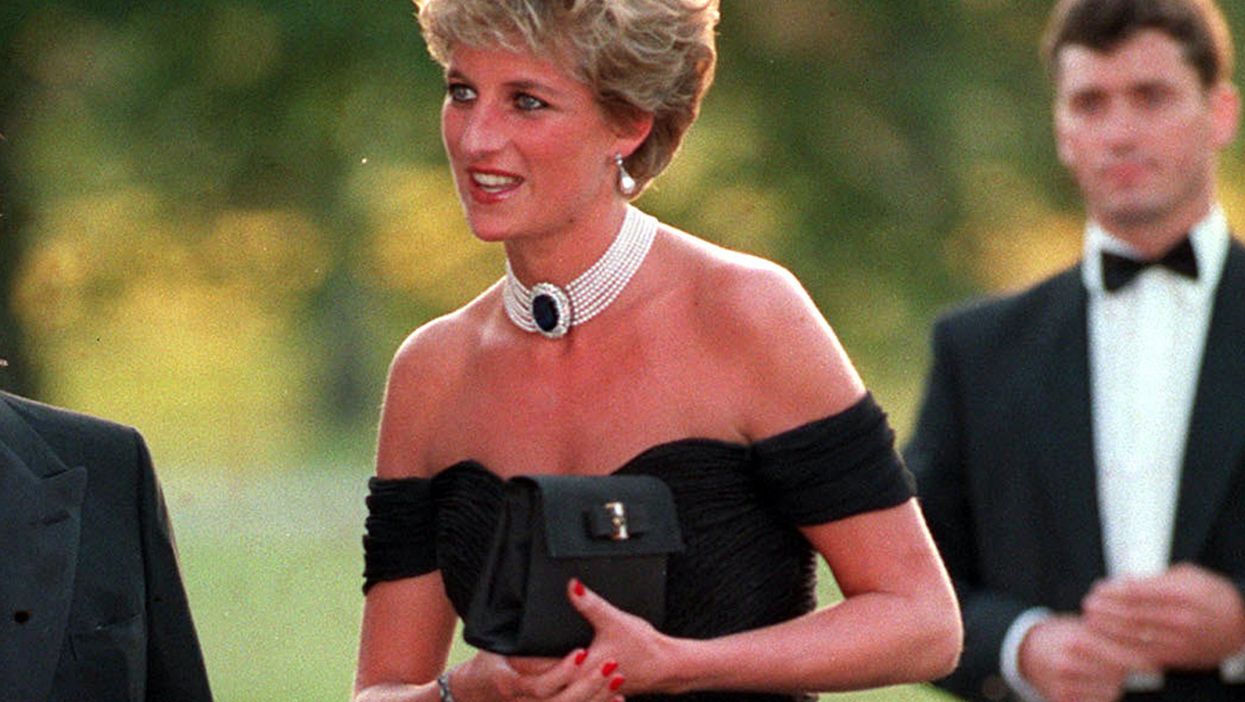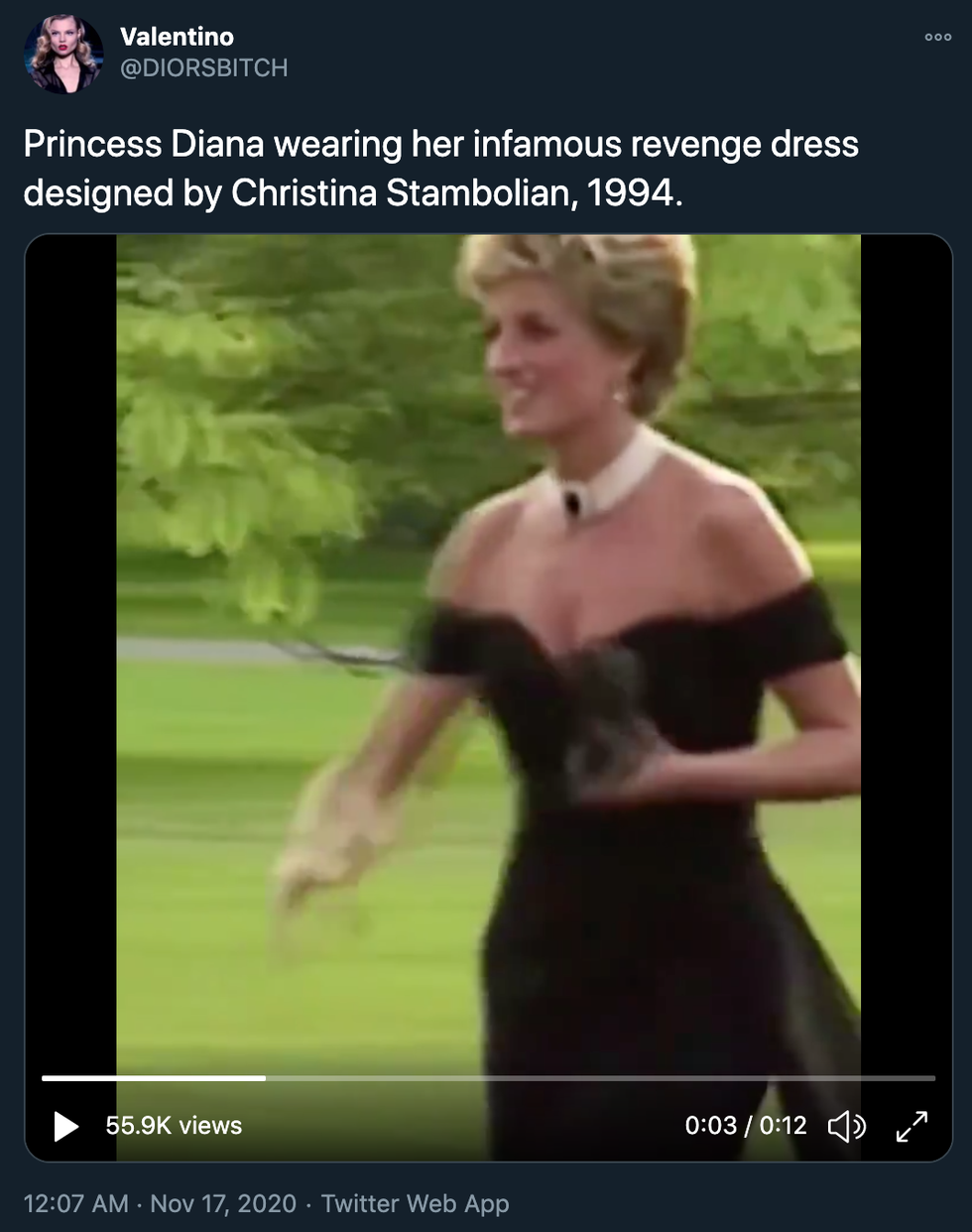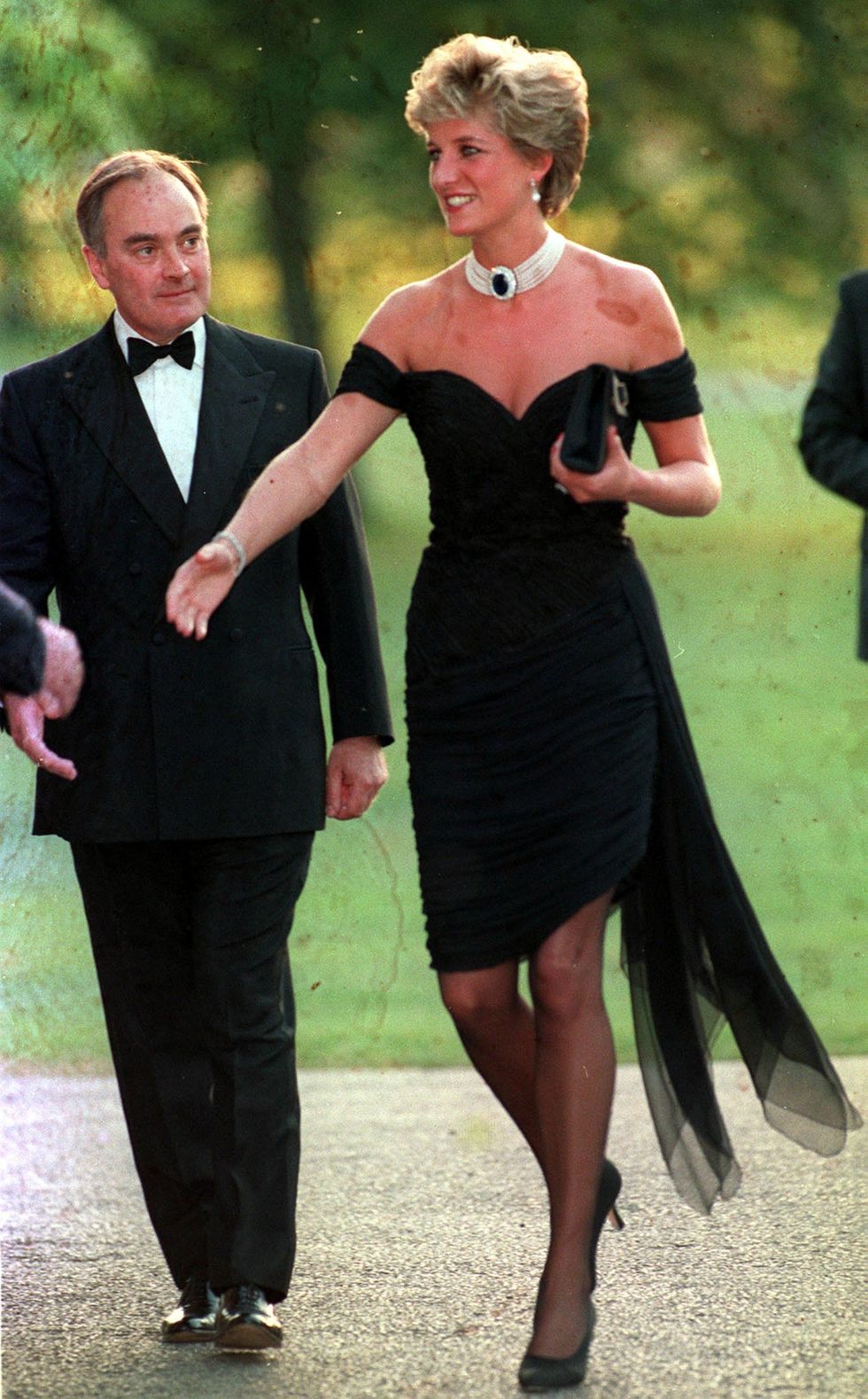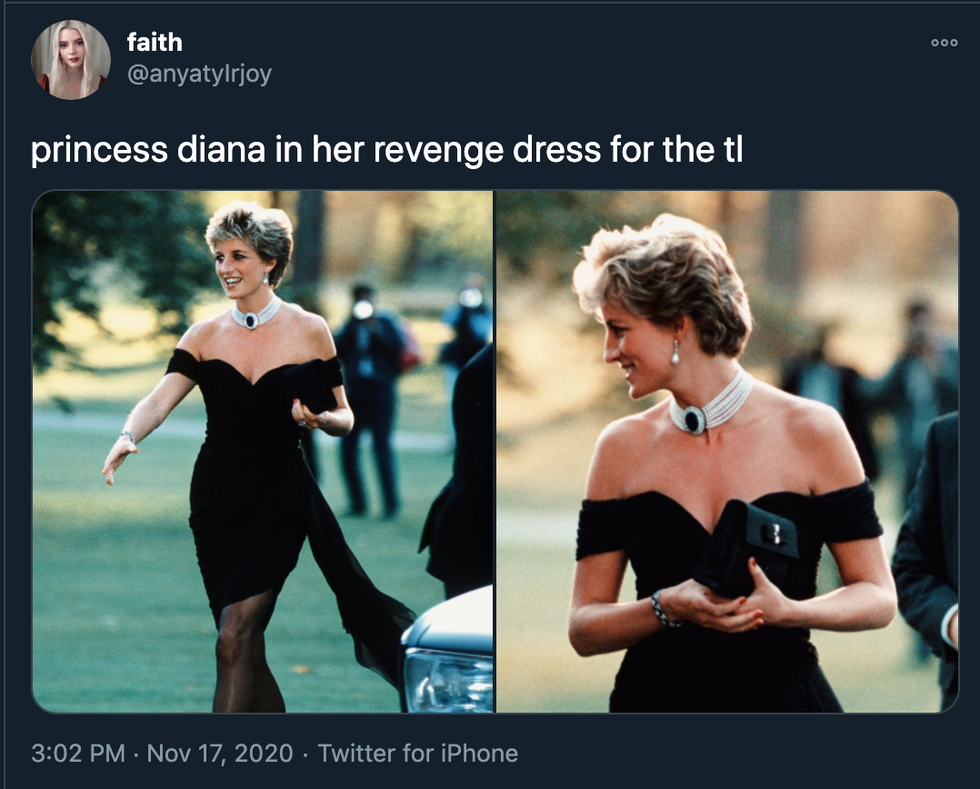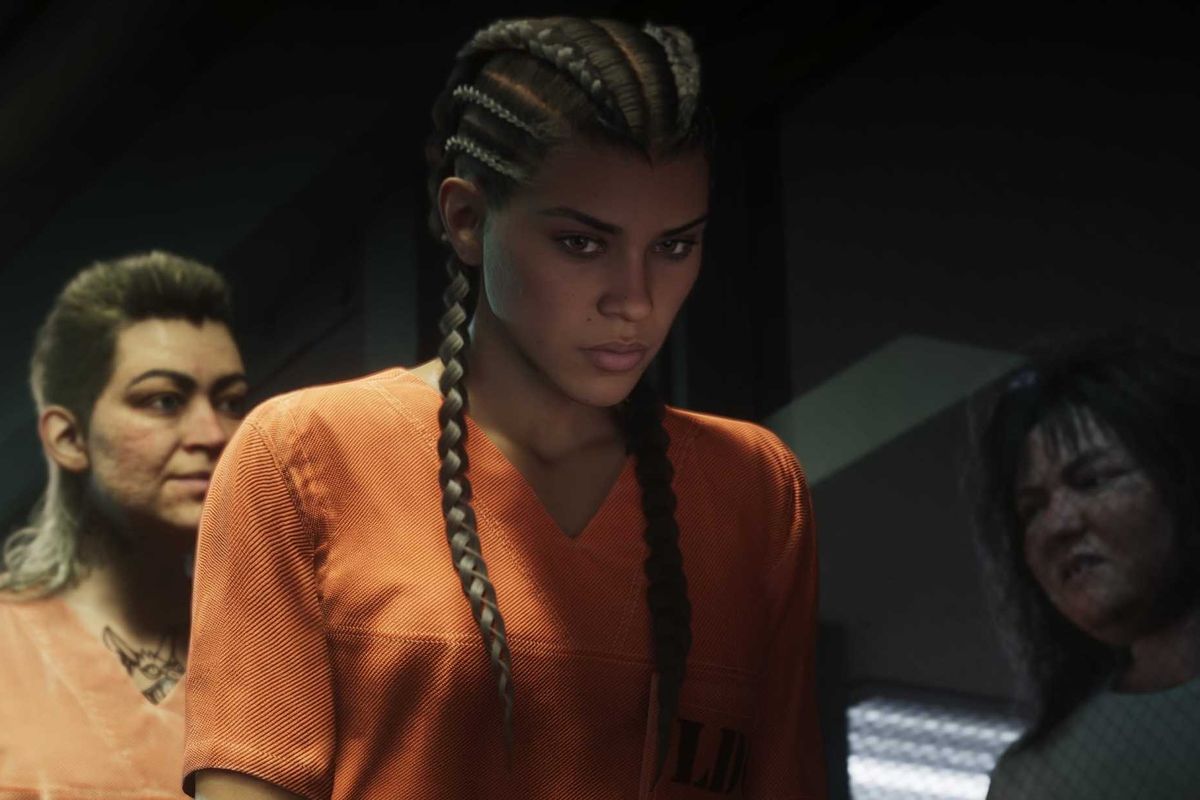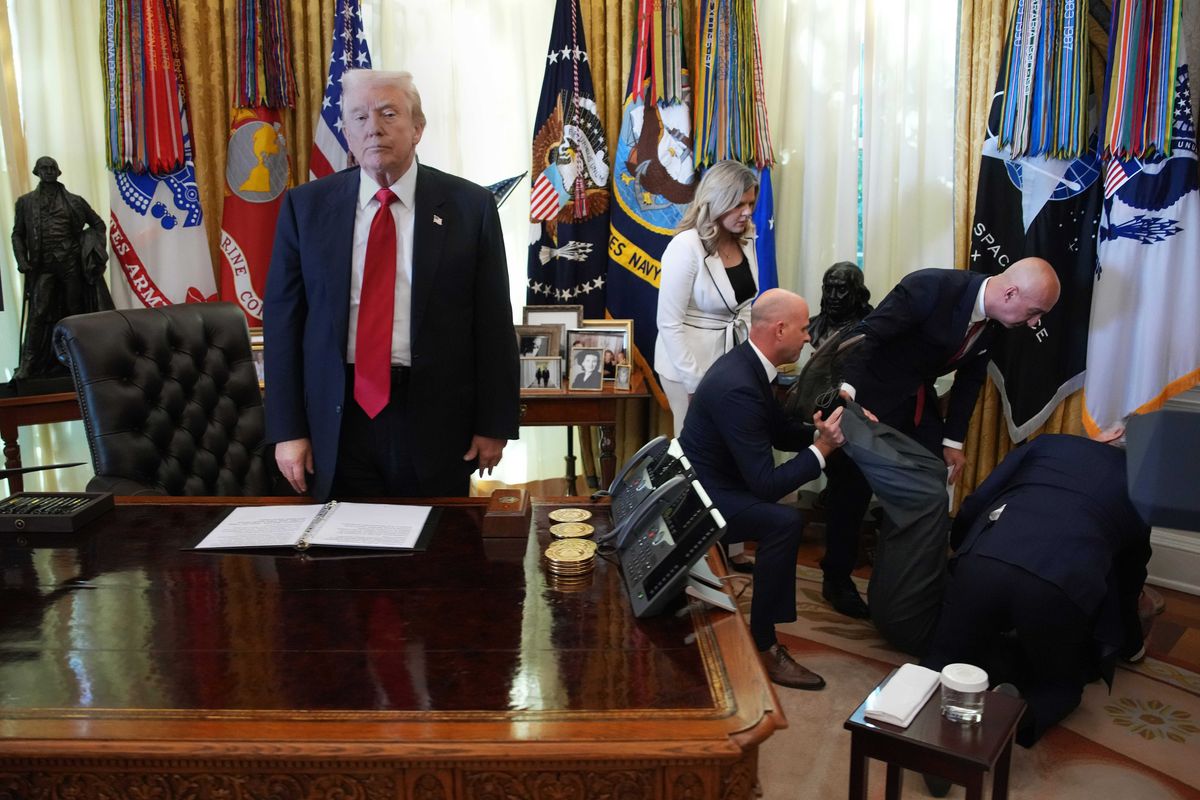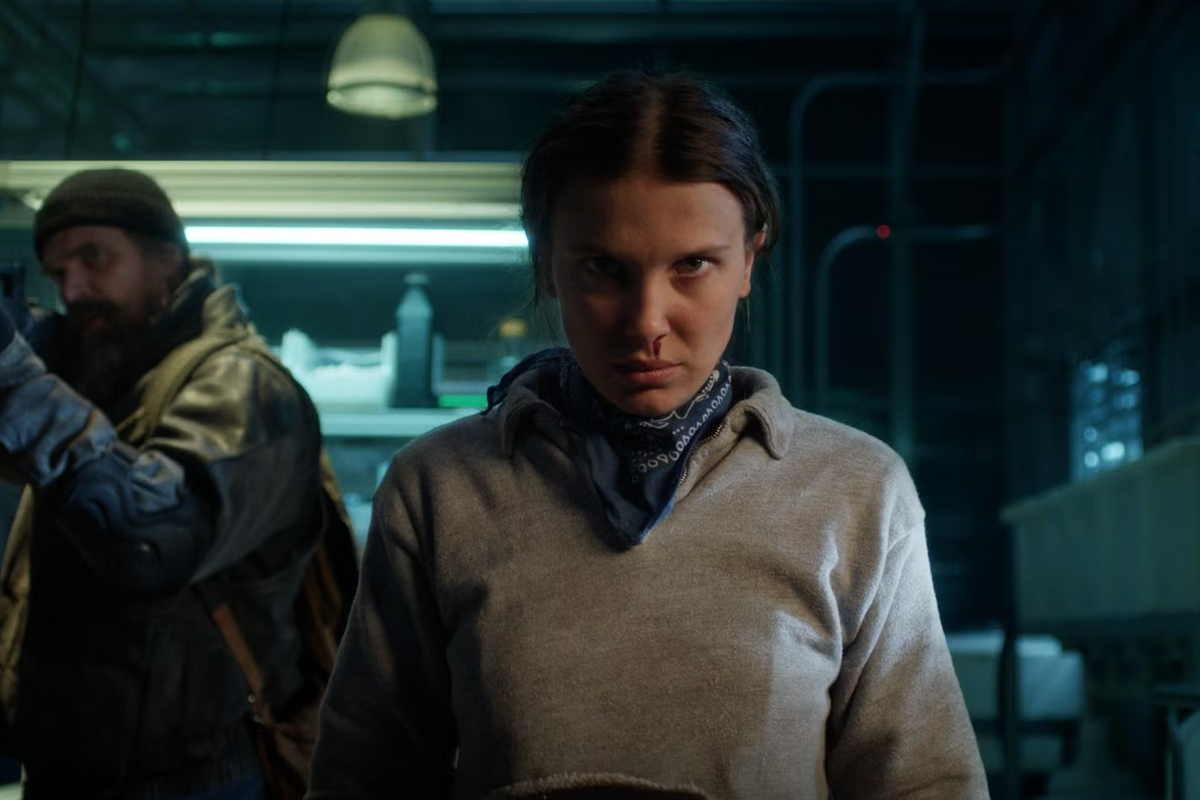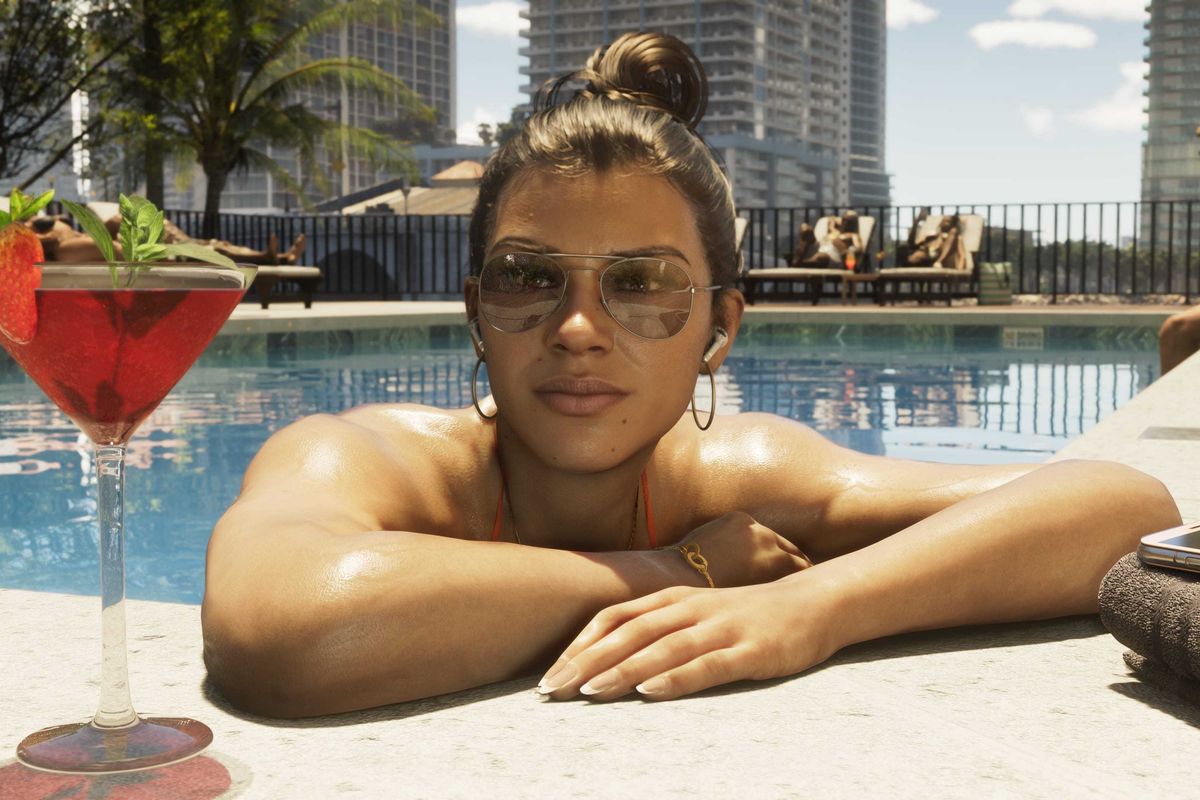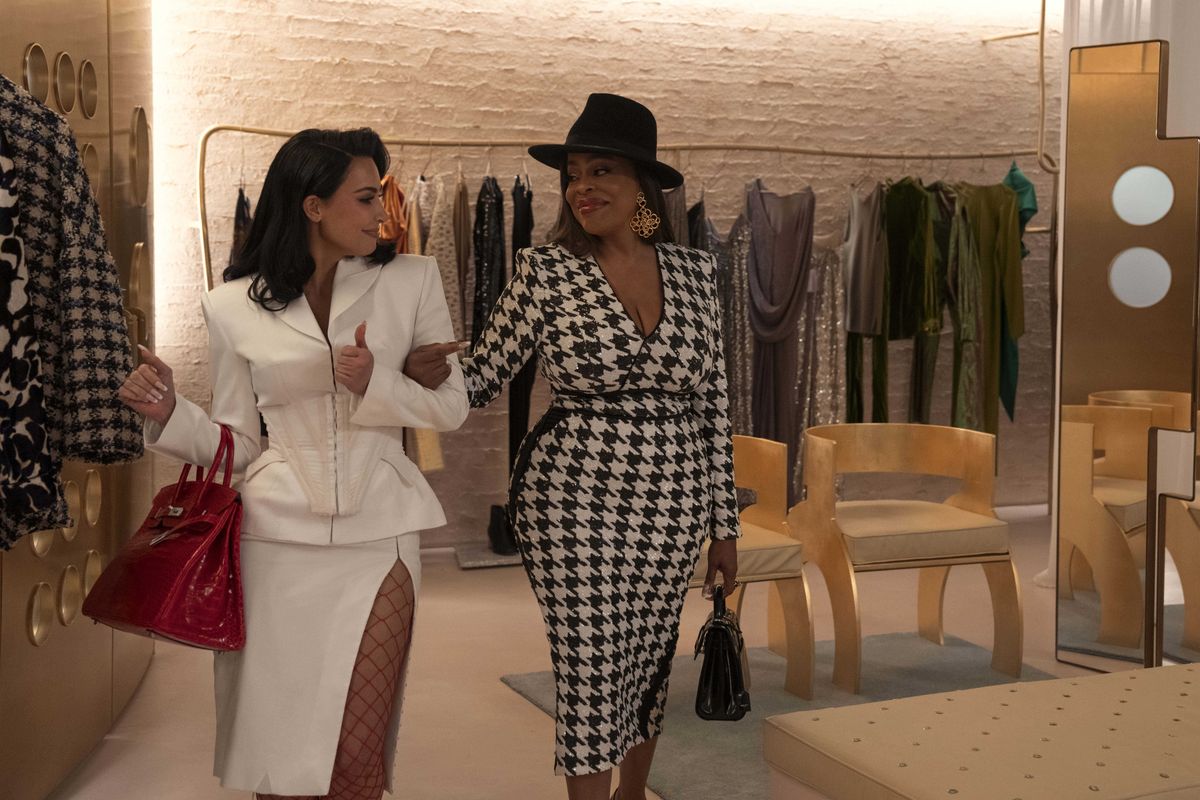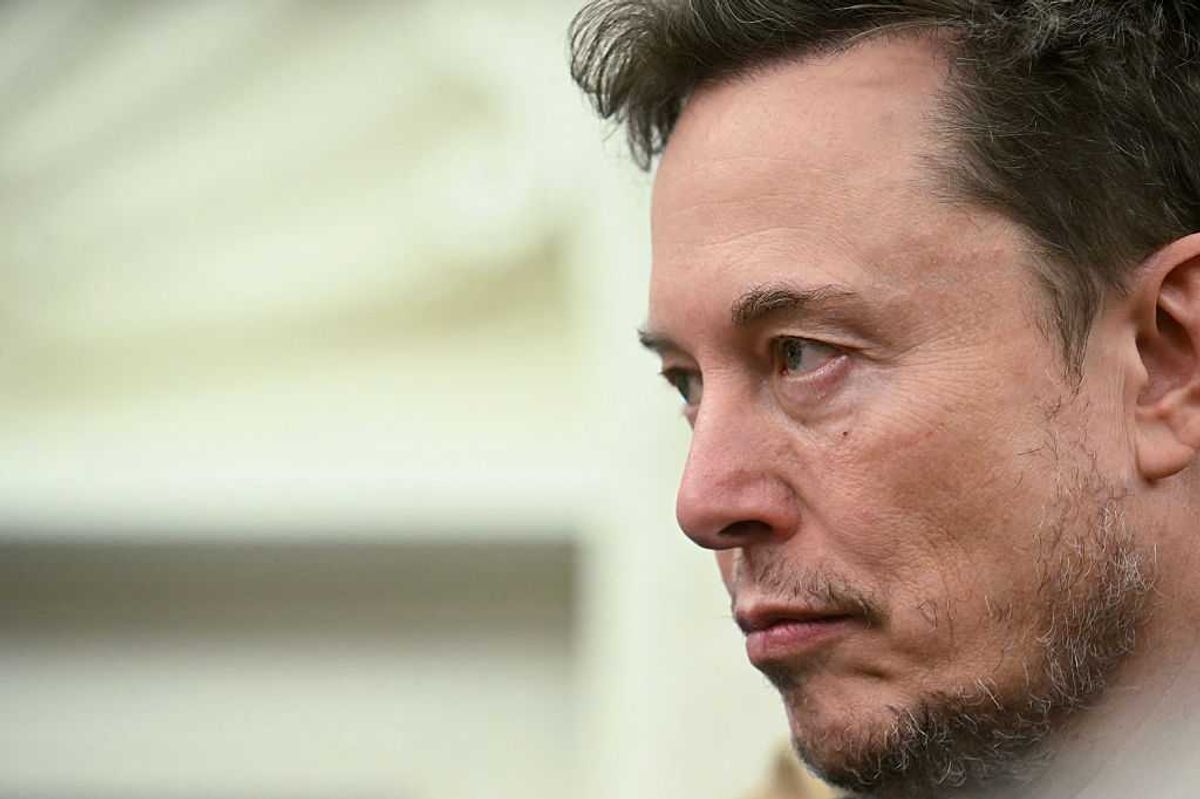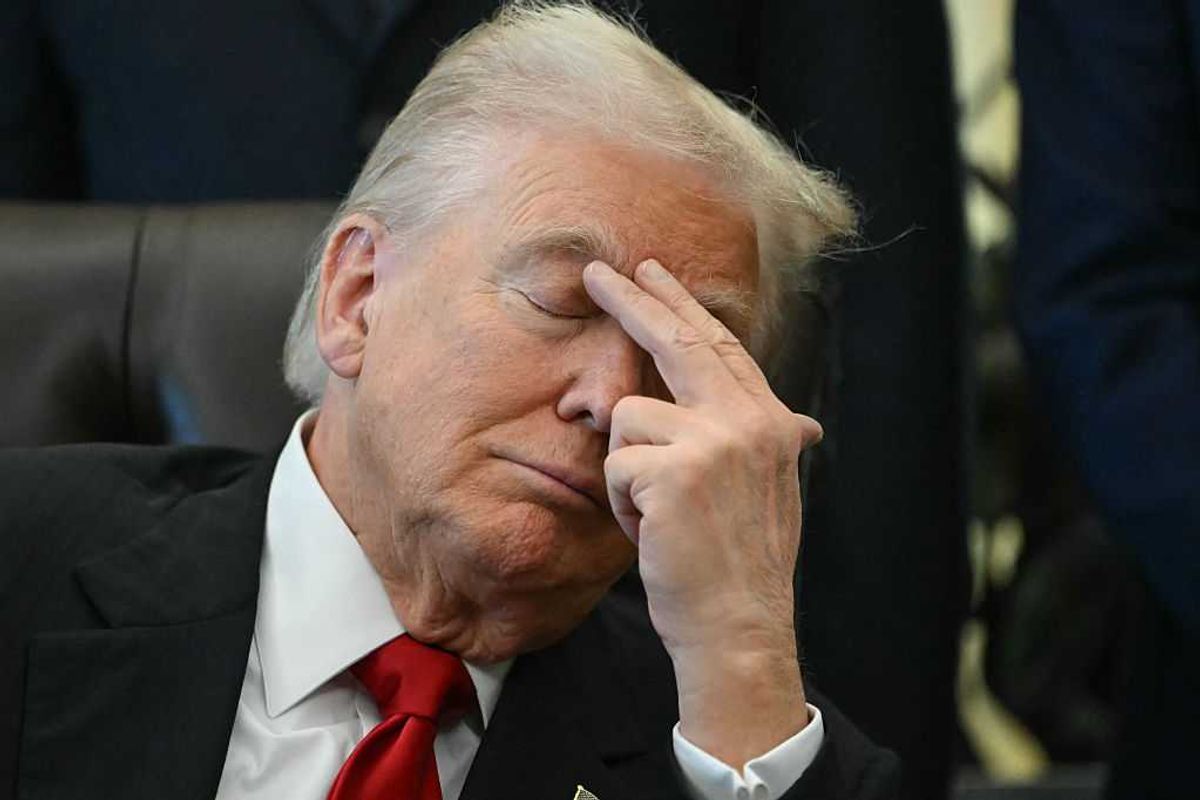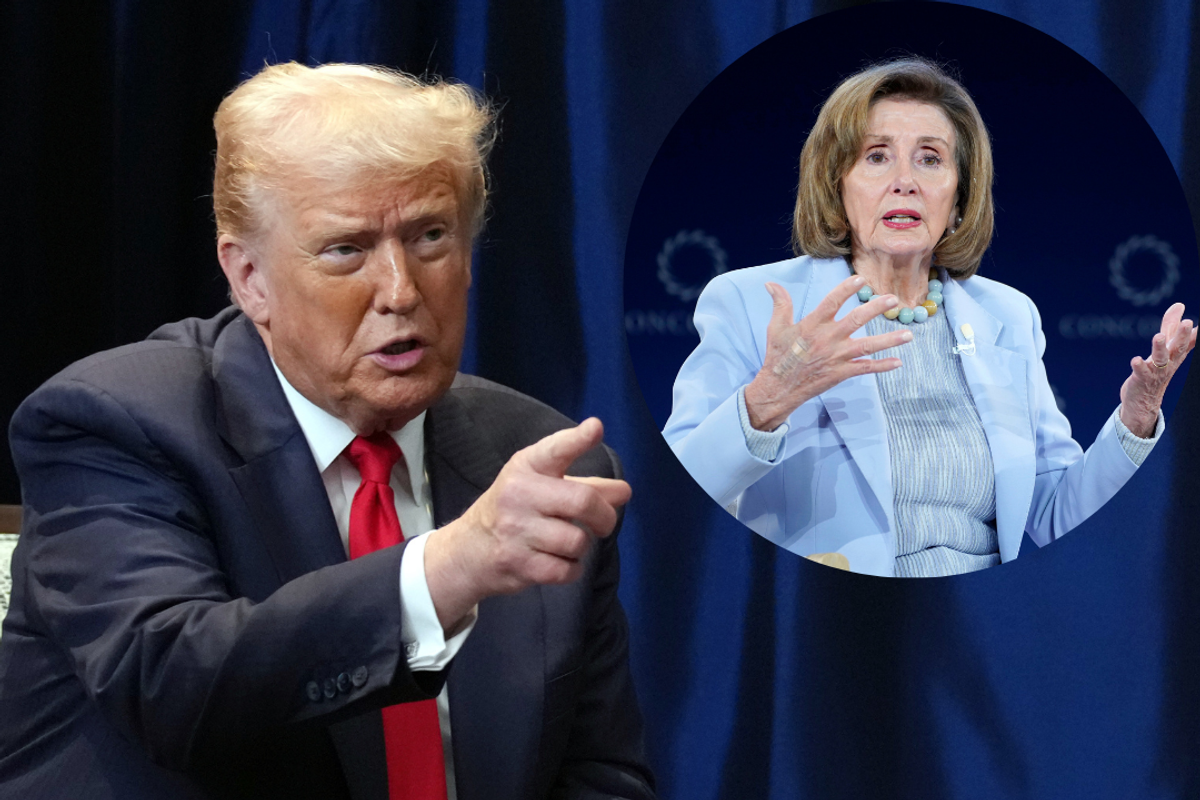Isobel van Hagen
Nov 22, 2020
This week people across the world became immersed in discourse about the Royal Family following the release of the fourth season of Netflix’s The Crown.
How realistic is it? Was the portrayal of Thatcher fair? Is it pro-royal propaganda? These debates have raged on.
Despite all the arguing, there’s one thing everyone seems to agree on: that princess Diana was a complicated, incredible figure whose story still captivates people decades after her death.
But there’s one princess Diana moment people can’t seem to stop obsessing over whenever the late princess starts trending: the so-called “revenge dress”.
Wait, what?
A quick Google search of “the revenge dress” with no other context reveals a barrage of images showing Princess Diana in a black off-the-shoulder dress and a thick pearl choker.
It seems no other dress in recent history (bar possibly Jennifer Lopez’s 2001 Grammy’s dress) has received as much coverage as this one, even today, with an onslaught of recent headlines like: “The Real Story of Princess Diana's 'Revenge' Dress — and How She Nearly Didn't Wear It” and “These were Princess Diana's most iconic revenge looks”.
The so-called ‘slinky’ cocktail dress with an asymmetrical hem has been dubbed “iconic” and “timeless” ever since Diana, Princess of Wales, wore it to a fundraising event in London’s Hyde Park in June of 1994.
Why is it called a “revenge dress”?
Diana’s outfit garnered an inordinate amount of attention because on that same night, it had been revealed that Prince Charles had been unfaithful to her during their marriage. It was no surprise then, that the tabloids, the general media, and public at large became, quite literally, obsessed with the ensemble.
“The Thrilla He Left to Woo Camilla,” The Sun wrote at the time, above a photo of Diana in the custom-made dress by Greek designer Christina Stambolian.
This led to the birth of what is now known as “the revenge dress”.
An influx of “YAS QUEEN” posts about the dress have made a particular come-back in recent days as Diana has been portrayed in The Crown for the first time in the series. There is nothing inherently wrong with fashion coverage of women in the public eye. In fact, “for both men and women, clothes can be an important tool for communication,” wrote Vanessa Friedman, chief fashion critic at The New York Times.Nevertheless, the over-the-top idolatry surrounding not only the infamous ‘sexy’ black dress – but also what it represents to us – is revealing.The ‘revenge’ portion of the dress is something people have projected onto Diana’s motives. Why do we assume Diana wants ‘revenge’? It’s not as if the princess ever made any mention of her rationale behind getting dressed.
‘But she doesn’t have to say it!’ You might argue, ‘you can see it in her eyes! And the circumstance is too much of a coincidence.’
As People Magazine editor Brittany Talarico put it; “Of course Diana knew that all eyes were going to be on her. She didn't have to say anything with words. It was a fashion response – that dress became her clear message to Charles and the world."
But it’s certainly possible that someone can want to look good without seeking revenge.
But the “revenge dress” isn’t entirely unproblematic.
There is nothing inherently wrong with fashion coverage of women in the public eye. In fact, “for both men and women, clothes can be an important tool for communication,” wrote Vanessa Friedman, chief fashion critic at The New York Times.
Nevertheless, the over-the-top idolatry surrounding not only the infamous ‘sexy’ black dress – but also what it represents to us – is revealing.
The ‘revenge’ portion of the dress is something people have projected onto Diana’s motives. Why do we assume Diana wants ‘revenge’? It’s not as if the princess ever made any mention of her rationale behind getting dressed.
‘But she doesn’t have to say it!’ You might argue, ‘you can see it in her eyes! And the circumstance is too much of a coincidence.’
As People Magazine editor Brittany Talarico put it: “Of course Diana knew that all eyes were going to be on her. She didn't have to say anything with words. It was a fashion response – that dress became her clear message to Charles and the world."
But it’s certainly possible that someone can want to look good without seeking revenge.
What revenge implies, when it is projected onto Diana in this way, is rooted in misogyny.
A quick search of the word, and the first dictionary sentence shows “other spurned wives have taken public revenge on their husbands”. In other words, a sexist insinuation of a “hell hath no fury like a woman scorned” archetype is cast over Diana without a second thought.
So why is revenge something to celebrate?
This brings us to the modern ‘stanning’ of the 1994 moment, and the wider obsession with a woman’s appearance as “vengeful”. InStyle called Diana’s look “the ultimate fashion power play”, adding that now, “more than 20 years later, women everywhere are still channeling their inner Lady Di with their own head-turning breakovers”.
Listing “Reese Witherspoon’s sunny yellow Nina Ricci mini, post-Ryan Phillippe split” and “Bella Hadid’s Alexander Wang cat suit at this year's Met Gala (eat your heart out, The Weeknd)”, the fashion magazine aims to, “look back at the best revenge dresses of all-time”.
This narrative undeniably defines women by the men they have been with.
In every case here (and there are plenty more), the outfit is in relationship to, and being defined by, a man. The phrase “revenge dress” calls to mind Khloe Kardashian’s TV show Revenge Body (the problematic premise of which is essentially to lose weight in order to incite regret in a former partner). A “revenge body” – or a “revenge dress” for that matter – implies that a woman only has her looks as a tool at her disposal.
Everyone loves a fashion icon – or even just a regular great outfit. But the descriptive vocabulary used, and what that represents, has important meaning. And it’s a shame such a complicated and beloved woman keeps continually being viewed through this shallow lens.
In Diana’s case, creating a narrative that de-centres her, while simultaneously celebrating the assumption that ‘revenge’ is the only thing that could possibly be on a woman’s mind, is decidedly not ‘iconic’.
Top 100
The Conversation (0)
